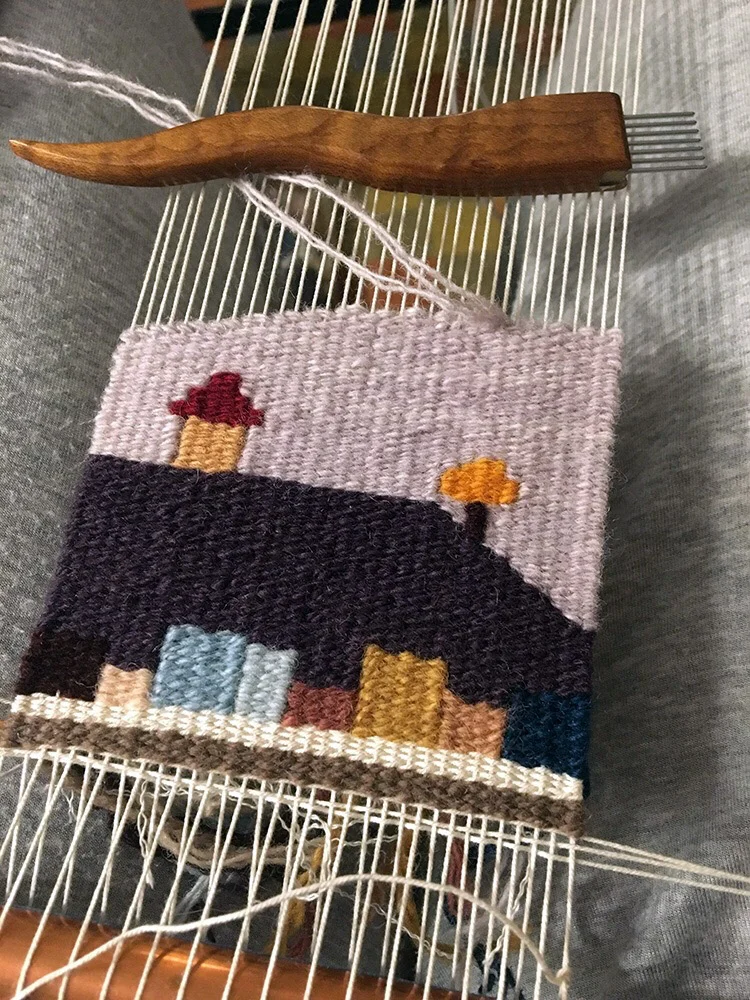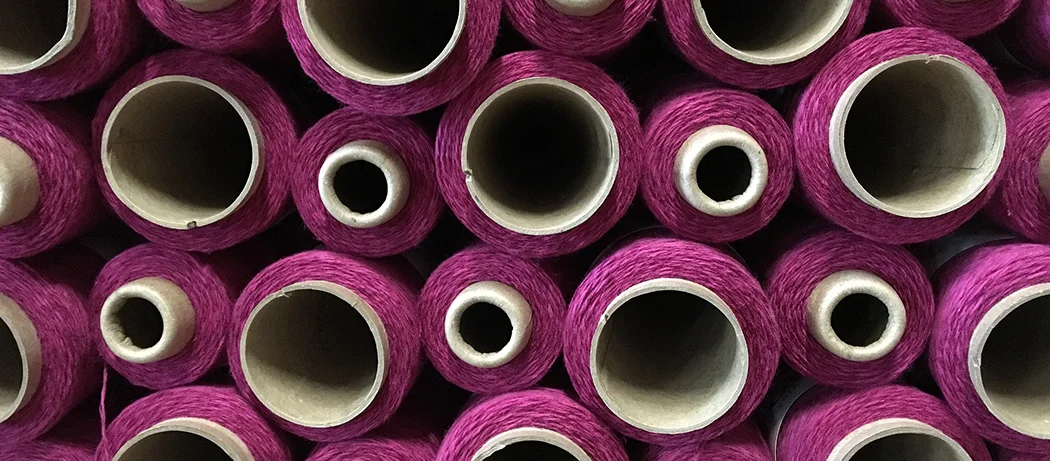I did a Facebook live in my private Facebook group last week in which a long-term student asked me a very good question. She asked this question live, so my response was off the top of my head and unrehearsed.
Circumnavigating Massachusetts
During my New England trip, I had a weekend where I drove completely around the state of Massachusetts. I’ll call it circumnavigation though I think that only applies to boats. We were shooting photos in Harrisville, NH on Friday and I stayed in a hotel on the border of MA that night. From there I headed south of Boston for some time with Sarah Resnick who owns GIST Yarn and Claudia Chase (owner of Mirrix Looms) who made the long drive from her home in New Hampshire.
Some practice is required
If you’re in my online classes, you might by now be used to me saying that tapestry weaving takes practice. As adults, I actually think this fact can be a little hard for us to wrap our minds around. Many of us trained for a long time when we were much younger to become good at whatever we spend much of our days doing. We forget that back then, we practiced.
When learning tapestry weaving, we have to understand with our heads how the structures work and we have to teach our hands to manage the physical materials we’re working with.
In college, I trained to be a piano teacher. I knew I was never going to play in Carnegie Hall, nor did I have any desire to be a performer. I loved my pedagogy classes and ended up writing a piano method for preschoolers as a senior honors thesis. In the process of testing that book, I taught a little group of 3 and 4-year-olds to play the piano from my method. I was astounded at how fast these little tykes could gain the physical knowledge of pressing particular keys. They were not, however, so quick at understanding how reading music worked.
The Mighty Ugly
. . . The same thing has to go for tapestry weaving. It might be that I weave something and then weave it again another way and then again and again… and the good thing about that is then I have something that art people call “a body of work.” How cool is that? I thought I was just correcting mistakes! I find myself looking at weavings my online students make and recommending they try that idea again. I mean this in the sense of, “That is a great idea! Run with it!” and I hope they take it that way.
Making ugly things
I’ve made some ugly things lately. Not on purpose really, they just turned out that way. Mostly they’re tapestry diary pieces. Sometimes they’re other fiber projects. I find that if I make something that I just don’t like, I will still pin it up on my tapestry diary wall, but I won’t tell you, dear readers, about it. I started wondering this week why I leave certain things off the blog and I can pretty confidently say that it is because I’m disappointed with them. Or perhaps if I’m even more honest, it is because I want to preserve some superhero tapestry artist image which I’m sure I’ve blown my cover on long ago anyway. However, in a social media glitz, glamour, and gossip world, who wants to post something that turned out kind of ugly?
I can’t always pinpoint exactly why something doesn’t satisfy me. I do tend to be more of a process weaver than a product weaver, so it does take quite a bit of “ugly” to make me lose interest in a weaving. I really enjoy the process of making things, and much of the time I care a lot less about the finished product. (I hear there are people with the opposite affinities. Is this true?) So when something doesn’t quite feel right, I tend to take advantage of the fact that I own piles of looms (for teaching of course) and just start something new. As you can imagine, that can leave a studio full of UFOs.*
Widening my fiber world
Last week my #studiofriday was actually Wednesday and Thursday at Interweave’s YarnFest. Since I live just down the road and I’ve always wanted to take a class from these particular teachers, this was the year. I didn’t have the time to teach this year, but I made the time to take two classes.
Wednesday was Spinning Nordic Wools with Kate Larson. Kate is a spinner and shepherdess and the editor of Spin Off magazine. She is also a fantastic knitter, embroiderer, and I’d guess she has a few other talents up her sleeve as well. I have taught at the same conference as Kate a few times and always wished I was in her class. I was so glad I made the time to take this one and that there was one space left!
Spinning is magic to me. Before I learned to spin I just bought the yarn I had been taught to use. I still use that yarn for my largest tapestries, but spinning has led me into a love affair with yarn. When you start to understand how yarn is made and to gain the skills to make the yarn you want yourself, the world opens up. There is nothing more satisfying than taking a lovely stinky fleece through all the steps to make and dye the yarn and weave it into a tapestry. It is magic.
Analog. Our brains design better in analog.
I know you might not believe it (what with my youthful glow), but computers as a personal device did not exist when I was a kid. I was born in the 70s and as a pre-teen I received an electric typewriter for my birthday along with a typing course on 45 rpm records. And yes, I had a red plastic record player in my room on which I mostly played a Tchaikovsky record of Swan Lake. I learned to type in a flash. I loved those exercises. Whole pages of unintelligible jibberish which quickly taught my brain where all the letters were. I can’t imagine not being able to touch type. I still remember the hum of the electric typewriter and the clunk of each key being pressed.







